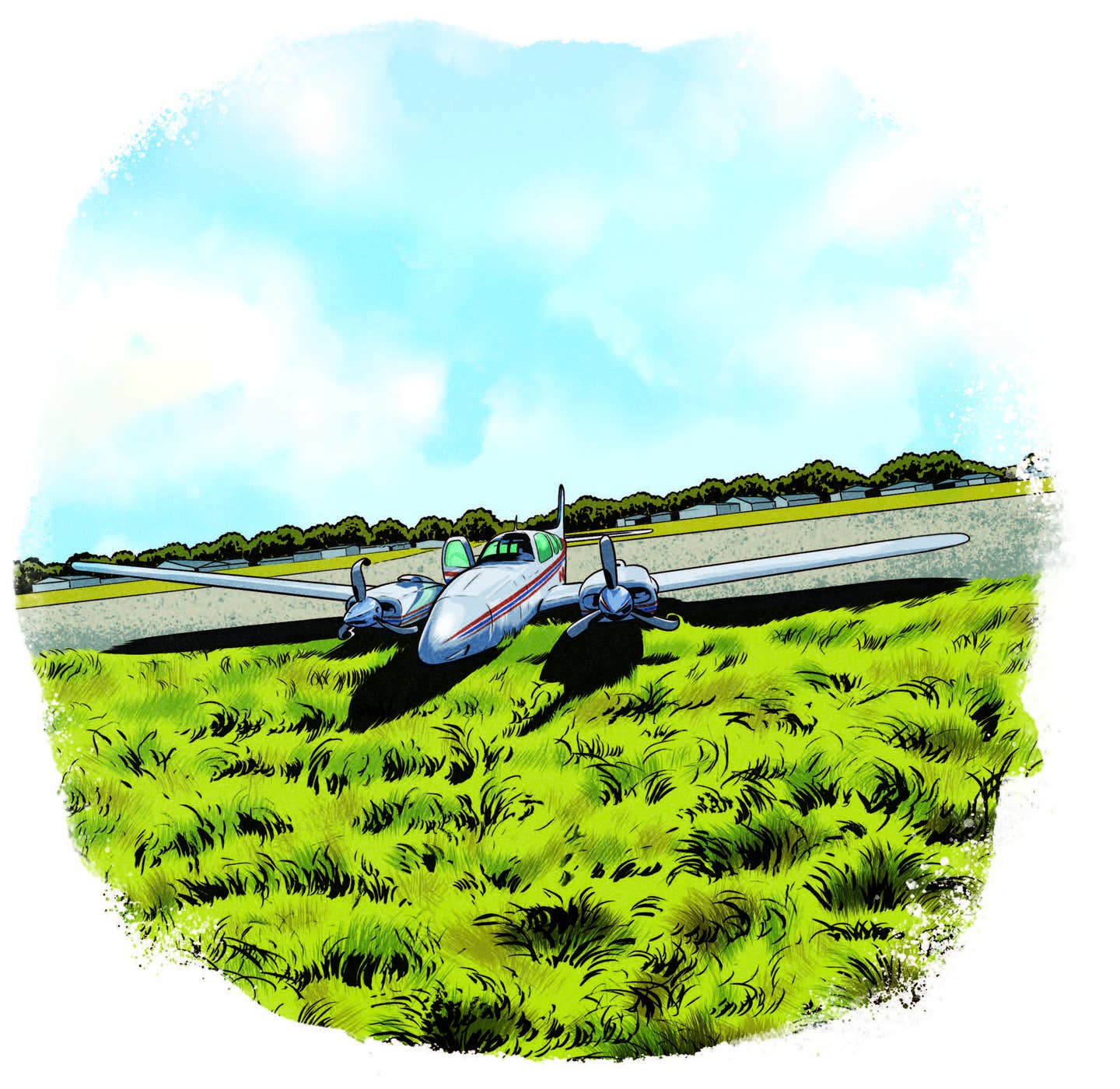Look Out, Rapid City!
A return to “needle, ball, and airspeed” saves a B-24 crew.

Credit: Joel Kimmel
It was our first night cross-country flight in the B-24, beginning at our base in Topeka, Kansas, on a triangular flight plan across the American Midwest. The aircraft was one in a pool of training B-24s and we’d not flown this particular one before.
We took off in the dark after only a gentle warning of a cold front we would fly over. Heading north, as we approached South Dakota, the weather got rough and wet snow appeared. We began to ice up. Then came the sporadic thump of rime ice thrown by the props against the fuselage. And then, I made one of the classic mistakes one should never make: I took my eyes off the instrument panel and began looking out the side window at the snow and patchy ice on the wing leading edge.
It was turbulent, and one large lurch of the airplane brought my eyes back to the instrument panel. It was awry. The gyroscope of the artificial horizon had tumbled, and the tiny aircraft silhouette was drifting across the instrument face. I reached forward to “cage” the gyroscope and as I did that, I must have pushed the wheel forward with my left hand. Suddenly, we were falling, twisting downwards...airspeed climbing...rate of descent moving toward its limit (2,000 fpm)...airspeed now over 300 mph...artificial horizon telling nothing...airspeed now past the red line on the indicator that said this aircraft should not exceed 355 mph.
I was 23 years old with nine other souls on board, alone at night, in a storm over Rapid City, South Dakota, losing all my altitude. And I was completely lost as to what to do. I was feeling very alone.
I was alone, for my engineer, who had been standing beside me, was forced to his knees by the diving spiral, and my copilot was sound asleep in his fully-reclined seat. There was only me to somehow figure out what was happening and what to do. I screamed, and that helped, and then I heard a voice, that often-damned training instructor’s voice from so many hours of instrument flying under the hood: “Needle, ball, and airspeed. Needle, ball, and airspeed. Damn it, why don’t you do as I say? Needle, ball, and airspeed!” Over and over and over again.
And that did it. I focused on the instruments. Yes, I focused on the needle and ball. I straightened out the needle with the ailerons and then the ball with the rudder pedals. Now, I could focus on the airspeed (I don’t really remember what it was reading, but the engineer said later that it had reached 420 mph). I began pulling slowly back on the wheel to get the nose up and that airspeed down. Then, suddenly, the wheel came loose and my first thought was that the tail had come off! But it was my copilot, who had been awakened by my scream, brought his reclined seat back up, grabbed the wheel to pull himself forward, and unintentionally put us into a violent change of attitude that by all rights should have broken us up but didn’t. We had zoomed—from a steep dive to a steep climb. And the airspeed had fallen to somewhere around 92, but together we pushed the nose forward to get us level...at long last! Miraculously intact, ourcraft showed an altitude of 5,400 feet msl. The elevations around Rapid City are high enough (3,202 feet msl) to suggest we had been close to hitting the terrain, and afterwards, the navigator said he had seen lights of a city on the ground through the plexiglass dome on the top of his nose compartment!
We did not do much talking through the rest of the night. We took up the western leg of our assigned triangle and flew straight and level, most of us sharing the unspoken concern—whether our aircraft’s structure was going to hold together. At the first signs of dawn, we noted that our path was converging with what seemed like a line of clouds and agreed it would be imprudent to fly through them with a weakened ship. Then we saw a well-lighted airport below. The code of the airport’s rotating beacon revealed it as Denver. It then dawned on us that those “clouds” were the Rockies and the “high cloud” was probably Pikes Peak.
We turned and landed back at Topeka a little afterdawn, noted the frightening dive on the airplane’s log, reported it all to operations, and counted our blessings. Three days later, that same B-24 crashed with no survivors. It was last seen in a very steep dive. I assumed the elevator cables had given way.
But, yes, if you lived in Rapid City in the winter of 1943 and thought one night you heard a large airplane in a screaming dive, you would have never known how close we came to dropping in on you.
The next night’s flight also ran into winter weather during a three-legged trip. This time, me and my crew flew out of heavy ice, seeking warmer weather to the southwest of the front. After landing in Tulsa, Oklahoma—Topeka’s weather having closed in—I met a young woman named Vivien Poe in a bowling alley and, before long, we were married in the chapel at the Topeka air base.
Editor's note: John T. Foster flew west in 2003 at the age of 83.

Sign-up for newsletters & special offers!
Get the latest FLYING stories & special offers delivered directly to your inbox






